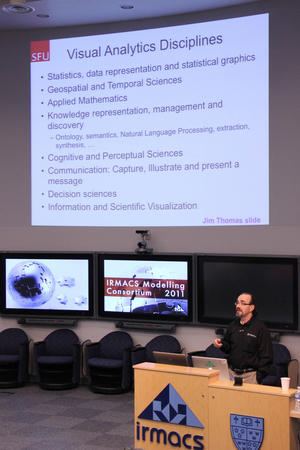Complexity in Visual Analytics
This talk explores the implications of the new science of visual analytics for cognitive science and informatics. Visual analytics was defined in a US National Research Agenda as “the science of analytical reasoning facilitated by interactive visual interfaces”. Visual analytics researchers seek to better inform decision-making in a variety of areas including public safety, aerospace engineering and maintenance, health care, and finance. They do this by building an understanding of the interaction of human decision makers and visual information systems, using that understanding to design better systems and work processes. Thus, visual analytics can be thought of as a translational cognitive science. It begins with new field study methods that characterize human and computational cognitive capabilities as they are used for decision-making in a range of situations. Because findings from field methods do not generalize well, we must then generate research questions for laboratory investigation. The results of those studies will enable us to build mathematical and computational theories that predict the impact of changes in technology on cognitive processes in technology-rich environments. Finally, we must design, implement, and evaluate new information technologies and work practices based on our research.
Visual analytics might interact with modelling in three ways: first, the information presented to the user might be generated by a model of the system in question, and interaction with that process may be ongoing (e.g. a mixed-initiative system); second, the need for a high degree of accuracy in prediction of human performance capabilities will require improved cognitive models (e.g. SOAR, SNIF-ACT); finally as the lag between an analyst's query and a graphical response becomes comparable to the pace of cognitive operations that the analyst performs as they reason, human and computational processes become "close coupled" and models of human-information systems may become necessary.
Multimedia

